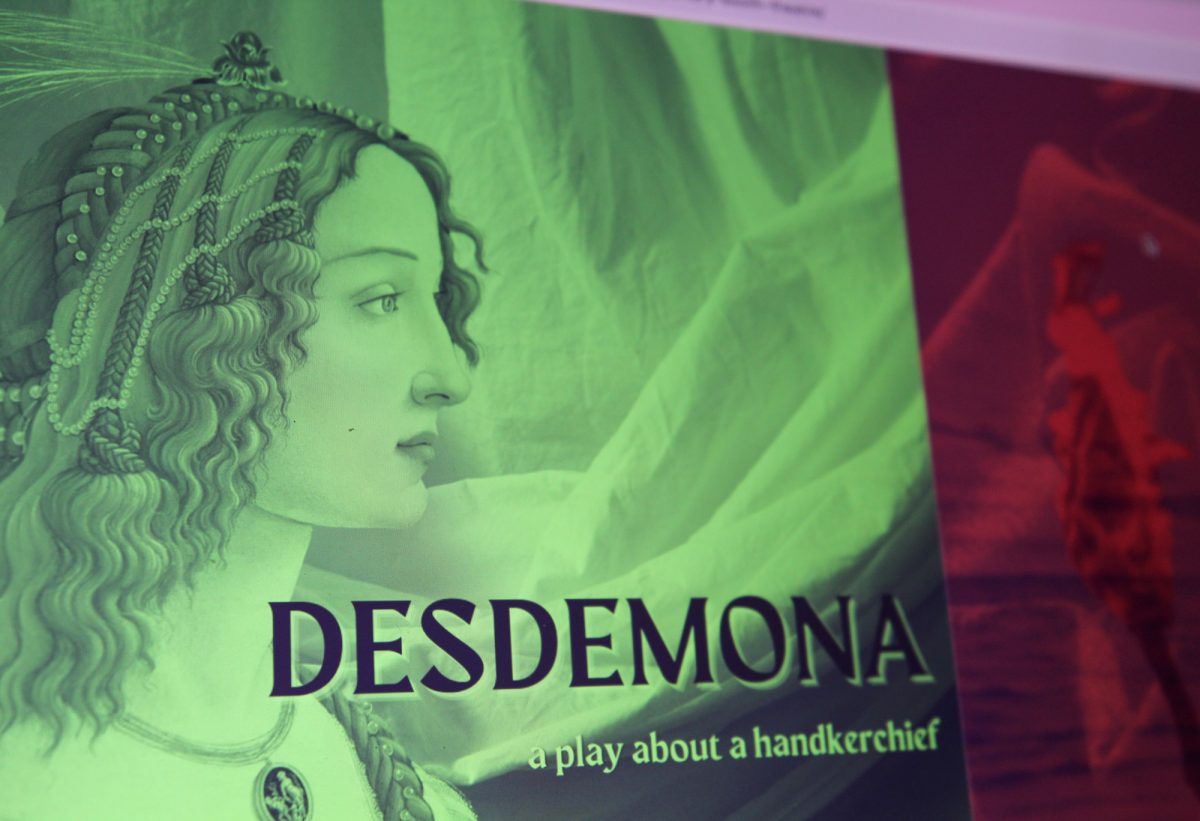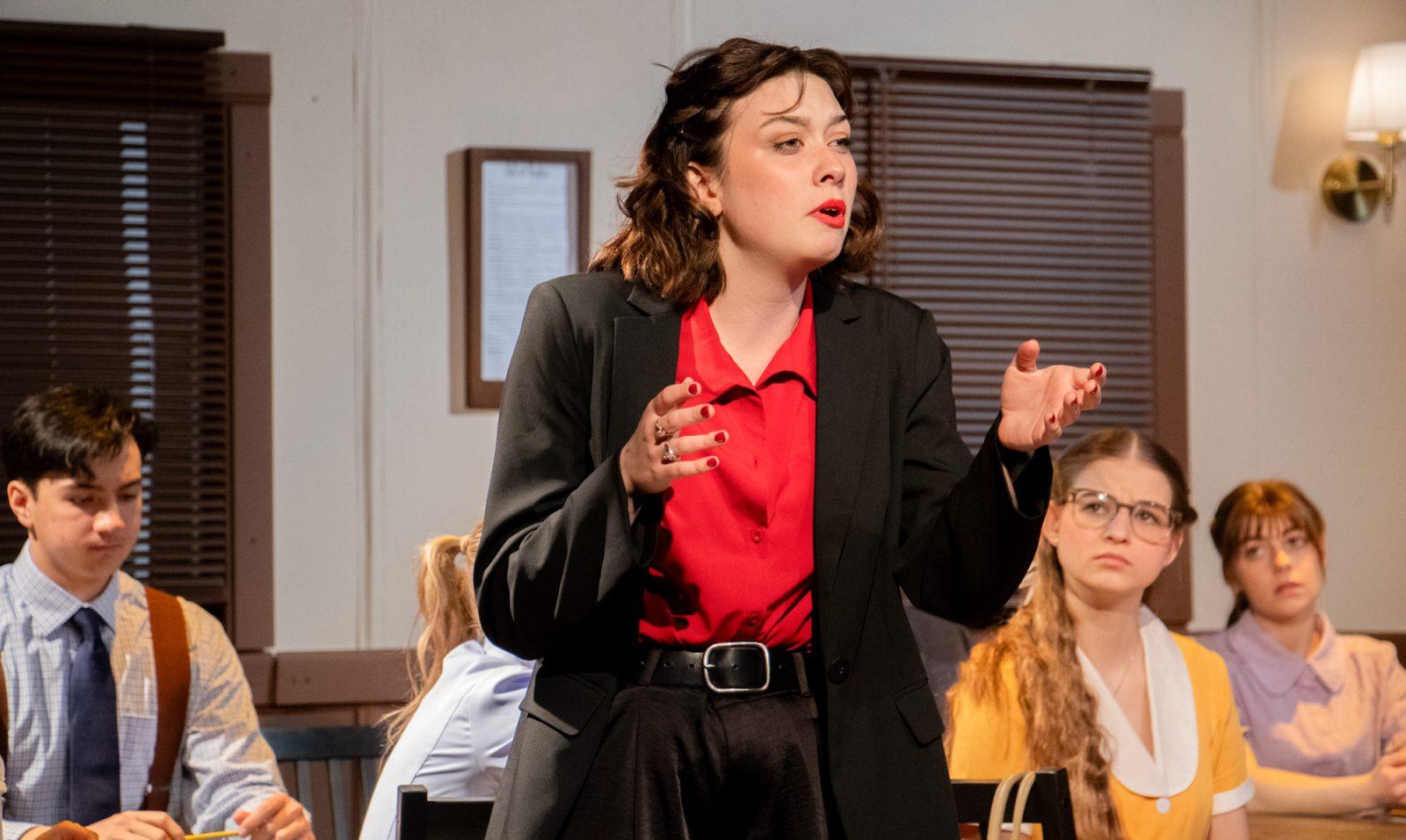A series of small rainbow lights gently illuminate the red-bricked street of the SOWA Art + Design District. As the night darkens, an intricate masterpiece radiates from two large screens displaying colorful paint splatters that glide and shift across stark yet hopeful words.

The Fountain Street Gallery’s 24/7 public exposition called “The Sidewalk Video Gallery” is exhibiting its first generative piece, where pedestrians can instantaneously be immersed into the minds of artists who truly have taken art to the next level.
The current showing titled “Ephemeral Days” is a collaboration between Stephen Cronin, the director and creative developer of Artists For Humanity’s Creative Technology Studio, and Kitauna Parker, AFH alumna artist in residence.
The piece showcases our limited time on Earth by gathering live weather data that changes the colors of the art piece depending on temperature, wind and time of day.
There are two 50-inch monitors facing out of the gallery windows at sidewalk level. One reveals the artwork itself, typically a short but influential composition. The other gives an in-depth analysis of how the art was created, the artists’ biographies and the different partnerships.
The first screen delves into Parker’s art and poetry from her original piece titled “Fear Not” — a creation examining the strength in our ability to persevere.
Cronin adds to Parker’s work with natural elements, dissolving patches of orange as the wind begins to pick up outside and spurts of turquoise blue to mimic the clear sky.
As the contrasting colors melt into the background, the audience is left with a feeling of uncertainty, curious to see what the next assembly of shapes and colors will look like.
These feelings are a reflection of the journey of life, where uncertainty and curiosity form our perception of the future.
Cronin further reimagines Parker’s verses by incorporating words in a stark red that move across the screen and subtly morph into other words such as “The afternoon” or “warmer.”
At times, the two artists’ voices would align perfectly to create impactful phrases such as, “It doesn’t matter, the weeks always shine.”
Phrases like these create a sense of hope, almost as if the piece is telling viewers that the good days always make up for the bad ones.
According to Parker’s biography on the second screen – also found on the Fountain Gallery’s website – the empowerment of voices is just as “big” as the art because art is a means of freedom and fighting back.
This commentary brings a timely and inclusive aspect to the piece because art is an accessible method of activism that can be implemented by individuals and communities.
Parker also said in her biography that she emphasizes the “beauty” of the human mark, specifically how humanity’s impact is a chance to bring people together and connect individuals from all different cultures.
“Ephemeral Days” brings the concept of cultural collectivity to light as the shapes of the weather-based colors are reminiscent of the shapes of countries.
This stylistic approach to geometry further places the fleetingness of life in a more worldly view.
The second screen also dives into the creative process of the art installation.
Working alongside each other, Cronin focuses on the elements in Parker’s poetry including colors, flow, texture, layers and words.
Using a visual programming system called TouchDesigner, Cronin used these elements, programming them to appear in a controlled randomness that not only heightens Parker’s original piece, but offers a new art presentation.
The last slide on the second screen dives into the gallery’s partnerships and key institutions, the most prevalent one being AFH.
The AFH, a non-profit organization both artists are involved with, provides under-resourced teens with the key to self-sufficiency through paid employment in art and design.
According to Cronin’s biography found on the Fountain Gallery’s website, Cronin’s role as director of creative technology at the AFH guides teens through using technology to express creativity in different digital forms.
The integration of both artists’ mentalities, experiences and the everchanging aesthetic of the piece comes to serve as a reminder that although life is impermeable, we must relish in its fluidity to make our voices heard and leave our mark.






























































































































